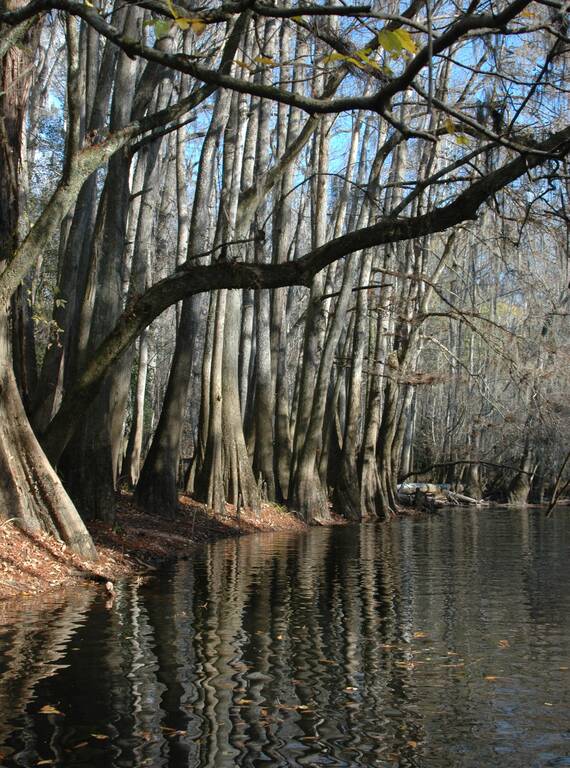Are you determined to get outside, even if the air is brisk? These nine parks allow you to stay active outdoors and work up a healthy sweat, even — or especially — with a winter chill in the air.
1. Hike the geysers at Yellowstone National Park in Montana.
Yellowstone’s famous geothermal activity is one of the most popular tourist attractions at one of the most-visited national parks in the world. Seeing the geysers in winter, however, provides a calmer, less-crowded experience, while the hot water against the crisp air creates an even steamier, more dramatic effect. The rainbow of colors in the Grand Prismatic Spring are even more vibrant against the snow cover.
2. Bike the roadways of Death Valley National Park in California and Nevada.
Death Valley in winter offers cool days that are perfect for bicycling. Road bikes and mountain bikes can be used on all park roads open to public vehicles. This includes more than 785 miles suited for a variety of skill levels, including hundreds of dirt roads with little traffic.
Visitors can choose from short and easy rides, or longer and more challenging distances. With route names like 20-Mule Team Canyon Road, Skidoo Road and Racetrack Road, adventure surely awaits.
3. Ski cross-country at Mount Rainier National Park in Washington.
The road from Longmire to Paradise is open every weekend from Friday to Sunday throughout the winter. With an average snowfall of more than 53 feet (641 inches) at Paradise, the cross-country skiing and snowshoeing are hard to beat. Wide-open meadows at 5,400 feet offer dramatic views of the Pacific Northwest and are easily accessible in this winter wonderland.
4. Ride a dog sled at Denali National Park in Alaska.
Denali in winter is not for the faint of heart, but for those who aren’t afraid of temperatures reaching 40 below, exploring the park by dog sled is a long-standing mode of local travel. You don’t need to bring your own mush team — though you can, if you have one. Experienced concessioners like EarthSong Lodge in Healy, Alaska, will arrange a custom trip for the whole family, specially suited to your interests and experience. They even provide the outer layer of clothing to make those frigid temperatures feel comfortable.
5. Snowshoe at Bryce Canyon National Park in Utah.
Many national parks offer ranger-led snowshoe walks during the winter, including Yellowstone, Mount Rainier, Rocky Mountain, Sleeping Bear Dunes and Lassen Volcanic National Park. Why go to Bryce Canyon specifically? First, snow and ice only enhance the otherworldly beauty of the site’s famous hoodoos. Second, the park offers a limited number of snowshoes free to participants who don’t have their own. Always check current conditions before you go.
6. Ice fish at Acadia National Park in Maine.
Only a few national parks allow ice fishing, but for those that do, the experience is more challenging than casting a line from the luxury of a boat. Visitors to Acadia can choose to drop a hook at any of the park’s larger lakes and ponds, including the popular Eagle Lake. Ice fishing season generally runs from January through March. Be sure to bring warm clothes and proper gear for measuring and cutting the ice, and only go out when the ice is thick enough to support your weight. The reward? Trout, salmon and all kinds of bragging rights.
7. Ski or sled at Sleeping Bear Dunes National Lakeshore in Michigan.
Sleeping Bear is best known, of course, for its giant sand dunes. When winter transforms the landscape, those dunes become a snowy wonderland. Sleeping Bear Heritage Trail is an especially good spot for cross country skiing, as well as Pierce Stocking Scenic Drive and Alligator Hill Trail. Both offer great views of Lake Michigan. Not into skiing? Bring your sled to Dune Climb (the only part of the park where sledding is permitted) and take your inner child on a thrilling ride down the slope.
8. Snorkel at Biscayne National Park in Florida.
That’s right — in South Florida, snorkeling and diving are winter sports! And what better place to enjoy underwater adventures than the largest marine park in the National Park System, home to hundreds of colorful fish species, turtles and even manatees? A short boat ride can take you to explore the park’s Long Reef, Sands Key, Fowey Rocks Lighthouse base and other prime spots, including the Maritime Heritage Trail that features six shipwrecks.
9. Canoe or kayak at Congaree National Park in South Carolina.

Canoe trail in Congaree National Park.
NPS/Elaine LeslieSouth Carolina’s mild winters are a great time to explore Congaree’s 15-mile Cedar Creek Canoe Trail. Bring your own equipment or sign up for a local outfitter’s paddling tour. The trail winds through old-growth forest to the Congaree River, and you could see river otter, deer, turtles and wading birds along the way.
The creek’s water levels can fluctuate as much as 10 feet in this floodplain wilderness, so be prepared to portage your canoe or kayak over dry areas and other obstacles — a bonus workout, for sure!
Stay On Top of News
Our email newsletter shares the latest on parks.
About the authors
-
 Jennifer Errick Managing Editor of Online Communications
Jennifer Errick Managing Editor of Online CommunicationsJennifer co-produces NPCA's podcast, The Secret Lives of Parks, and writes and edits a wide variety of online content. She has won multiple awards for her audio storytelling.
-
 Linda Coutant Staff Writer
Linda Coutant Staff WriterAs staff writer on the Communications team, Linda Coutant manages the Park Advocate blog and coordinates the monthly Park Notes e-newsletter distributed to NPCA’s members and supporters.
-
General